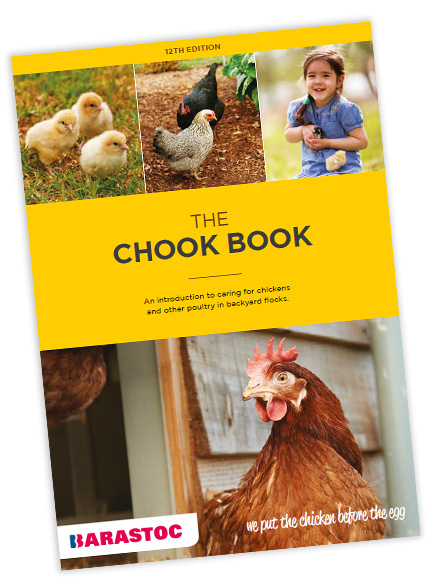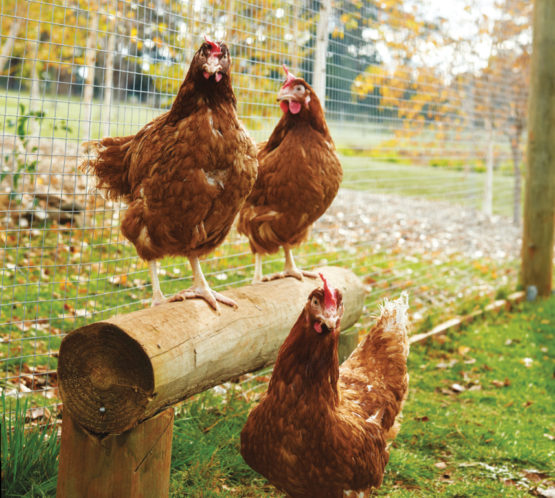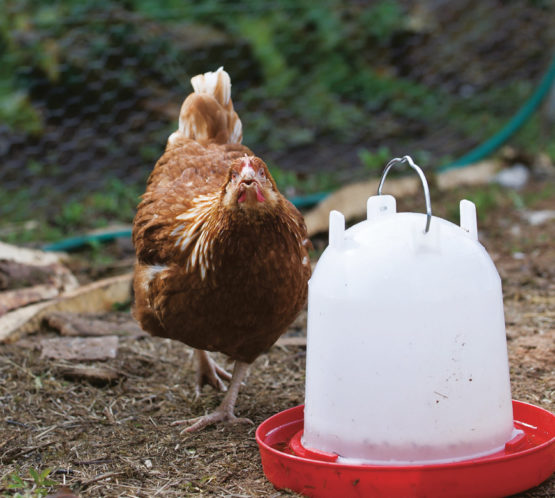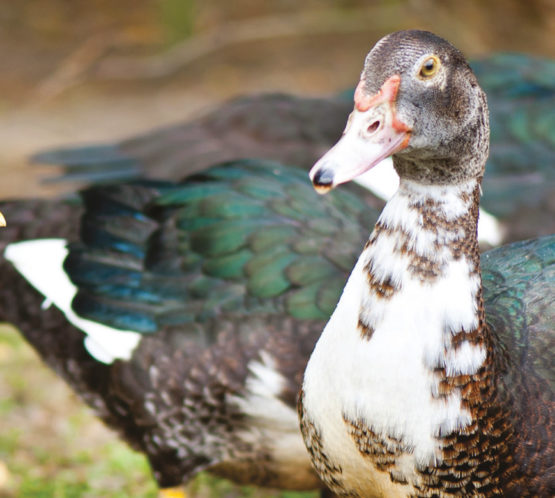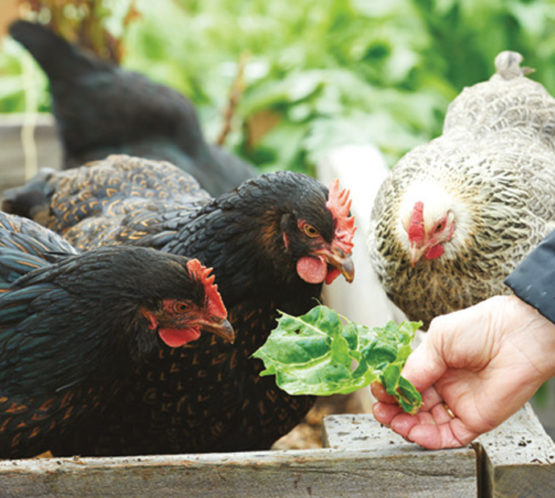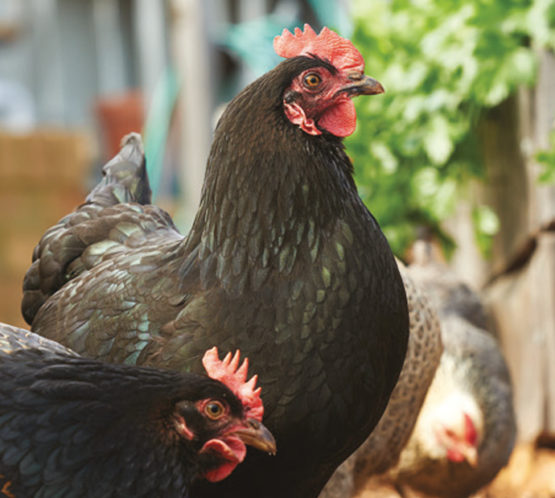People and chickens have been living side-by-side for a very long time. Our feathered friends were digging up worms and laying fresh eggs in backyards over 5,000 years ago. And from the beginning, they’ve had people all over the world asking the big question: which came first, the chicken or the egg?
At Barastoc we firmly believe in putting the chicken before the egg. More than 75 years of experience in feeding poultry have taught us that healthy, happy and well-nourished chooks produce better eggs, more often – which means more delicious, nutritious, breakfasts for you!
When it comes to taking care of backyard chickens, they give back what you put in. That’s why we’ve put together the Barastoc Chook Book, to give you all the information you need to feed and care for your own flock of laying hens. The Chook Book also includes an overview of caring for other poultry, such as turkeys and ducks, as well as a section on the Barastoc range of feeds and how to use them.
Keeping chooks is incredibly rewarding, and with a little guidance anyone can do it – after all some of the best backyarders we know are kids! Your chooks aren’t just champion layers-in-training; they’re affectionate, interesting and intelligent creatures that will give you years of companionship with the right care. Whether you’re a first-timer or an experienced backyarder, we hope that the Chook Book will be a helpful guide for you.
Part 1: An introduction to our Feathered Friends
People started domesticating wild chickens over 5,000 years ago. Over this time we have selectively bred into the chicken characteristics to make them not only better layers but also to produce a wide range of sizes, colours and feather types, from the common Isa Brown to the exotic and adorable Silkie Bantam.
Part 2: Why Keep Chickens?
The Romans used chicken behaviour to divine the future, especially during war time (lively chickens meant good news; sluggish chickens didn’t get a second gig). African tribes revered them as symbols of nurture and fertility. The Victorians bred them specifically for their plumage and colour.
Part 3: Establishing your Own Flock
Your first step should be to make enquiries with your local council to find out what you can and cannot do. Many local councils have regulations on the keeping of poultry. Typically, council regulations will include a restriction on the number of birds that are allowed on any given property.
Part 4: Keeping your Home Flock Healthy
Like all living things, chickens need to stay hydrated to thrive. Easy access to fresh, clean and cool water at all times is critical, especially over the hot summer months. Pay particular attention to water temperature in summer and try to avoid black plastic containers, as they will heat up very quickly in the sun.
Part 5: Birds of a Feather Flock Together
If you’re a bird enthusiast, there’s no need to pick favourites. There are a number of birds that will happily mix with chickens and have very similar care and feeding requirements. As always, before you start looking to diversify your flock, make sure to check local Council regulations.
Part 6: Feeding For Success
The diet of domesticated chickens should aim to provide a similar range of nutrients to what they would get in the wild. It should also encourage the chicken’s natural foraging behaviours. Your garden is unlikely to provide everything your chooks need in sufficient quantities, especially if they’re laying hens.
Part 7: Barastoc has a Feed for Every Flock
We have been trusted for generations to provide poultry owners with performance feeds that result in healthy, happy and productive flocks. We’ve got the right feed to provide your birds with a nutritious, balanced and complete diet, at every stage of life.



